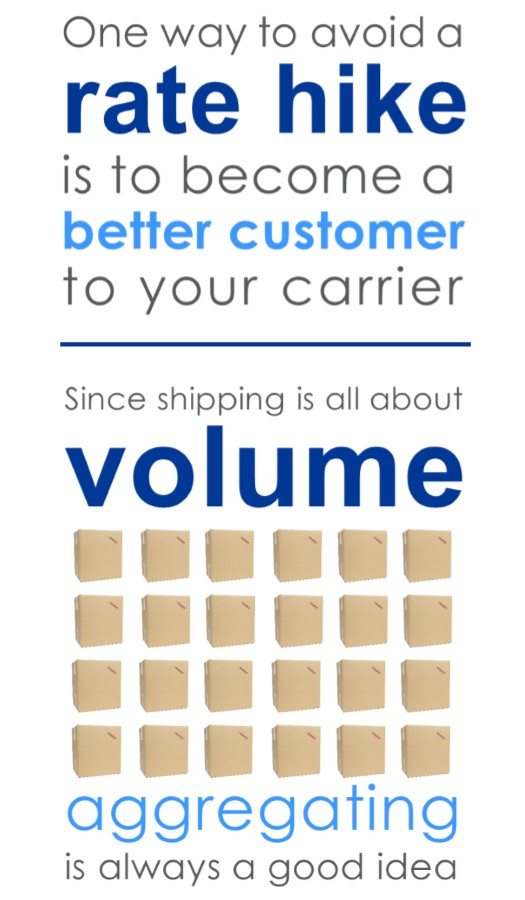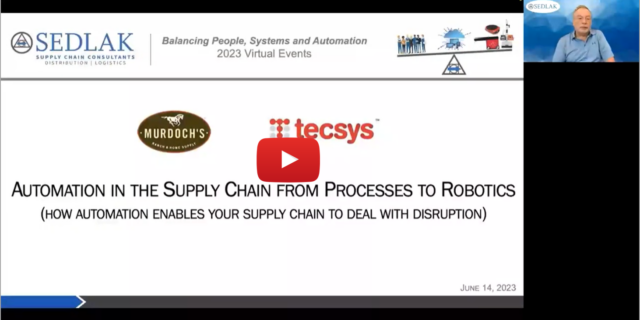Demystifying Freight Spend: How Shippers Can Get a Better Handle on Their Carriers (2 of 2)
July 26, 2016 By: Senior Management | Topics: Transportation ManagementPart 2 – Avoiding the Rate Hike
This two-part series details the factors affecting the price shippers pay carriers to move freight and how shippers can more effectively control freight spend. (Part 2 of 2)
As noted in Part 1 of this series, many elements affect the price shippers pay carriers to move freight. Understanding the key components of the pricing structure in carrier contracts is only half the battle in controlling freight spend. The other half is dealing with rate hikes that carriers inevitably enact.
Each year, individual carriers set their General Rate Increase (GRI) and call their customers to give them the bad news: “Our rates are going up 3.5 percent. Take it or find someone else to move your shipments.” Sounds like a no-win for the shipper. However, it’s possible for shippers to work with carriers to avoid the worst of the rate increases. Here’s how.
 Process Improvements
Process Improvements
One way to avoid a rate hike is to offer to become a better customer to that carrier. One company did it this way:
So, you’re telling us you need a rate increase because you’re not making enough money from our business. What do we need to do to make it worthwhile for you? We won’t take a rate hike, but…
-
Are we giving you loads that you don’t want or that you’re hauling at a loss? We’ll take those off the table—you don’t need to haul them anymore.
-
Are we keeping your trucks on the dock too long? We’ll commit to you that we’ll get you loaded in 45 minutes.
There are many processes a shipper can help streamline for the carrier to become a better customer. Some simple and obvious ways to do so include reducing dock waiting time, making freight more loadable by palletizing or stretch wrapping, providing truck unloading/loading so the driver never has to touch the freight, and providing scanning technology to reduce paperwork. Process improvements may not avoid a rate increase for every company or with every carrier, but it’s certainly worth the effort for all parties.
Execution Improvements
Execution improvements address the modes by which freight is moved. Multiple modes are available (truckload, LTL, parcel, etc.), as well as combinations of modes. Execution improvements against these can help improve a shipper’s transportation bottom line. Some of the most common execution improvements are mode shifting (aggregating or consolidating to larger, more economical shipments), pooling, zone skipping, milk runs, and continuous move (or interleaving).
Mode shifting simply means changing the way the company ships for a particular order. For example, if five 20-pound packages must be shipped from point A to point B, the company might normally ship via parcel and be charged for each package. At $30 apiece, that’s going to be $150. However, it might be able to consolidate those packages into one 100-pound LTL shipment instead. Over a short distance, that might only cost $75. Or, the company might have five 2,000-pound LTL shipments that could be more cost effective to ship as a full truckload. Since shipping is all about volume, aggregating is always a good idea.
Pooling involves aggregating when there are different source points or destination points. If those individual points are in the same parcel shipping zone and being sent by ground, it might be reasonable to consolidate those packages into a larger load delivered to a hub point where it can then be broken down into individual parcel deliveries over a much shorter and less-expensive distance.
Milk Runs load all of the company’s shipments onto one truck that makes the rounds to multiple destination points, dropping off orders as it goes—just like the milk man used to do. The idea behind it is that it’s probably more efficient and less expensive to run one truck on a longer route than running multiple trucks on shorter ones.
Continuous Move/Interleaving is similar to a milk run, except it cleverly combines inbound and outbound shipping. A truck may deliver to several customers, then go to a couple of vendors to pick up new product, then drop off to a final customer before returning to its origin point with the vendor loads. Carriers lose money when their trucks sit, or worse, travel empty. Continuous move keeps the truck moving and full, and also can help make the shipper a better customer to its carrier.
Volume Increases
Transportation is all about volume. Typically, the more volume a company ships, the better rates it can get from carriers. But what if the company doesn’t have the big volumes to attract a carrier at a great rate? One option is to invest the time and effort to investigate every possible avenue to find a carrier willing to take on these shipments. While that may result in modest savings over time, the question becomes: Is it worth the overhead of doing the research, say, every six to 12 months to keep securing the best deal for a small-volume business?
Another option is to work through a third-party logistics (3PL) broker. A broker can negotiate with carriers using the combined volumes of multiple customers to secure a better rate than any individual shipper can manage on its own. The main disadvantages of the broker model are 1) lack of visibility of actual costs and 2) brokerage fees. A broker may offer 5 percent savings to each of its customers, while keeping 10 percent for itself. And although the broker obviously needs to make a profit, some take advantage of the ignorance of their customers to keep a bigger piece of that pie than others.
A third option is limiting the carrier base. Companies with multiple facilities may have 10, 20 or more carrier contracts and may allow each facility to negotiate its own carrier contract. This is especially true for businesses that acquire other companies and retain those existing distribution networks. The motive behind this most often is redundancy: If one carrier can’t manage a volume peak or goes out of business, a multiple-carrier model provides protection. Unfortunately, it doesn’t always work that way. Instead, it is far more cost-efficient to give more shipments to fewer carriers with the stipulation in the contracts that if volumes become unmanageable, the carrier will be responsible for finding a replacement carrier and guarantee the contracted rate for those shipments.
However, that’s not to say a company should have only one carrier for all of its shipments. It would be unusual to find a single carrier that could successfully handle every type of shipment; but, more important, it would be difficult to maintain optimized service with a single contract. Having such a monopoly gives the carrier little incentive to offer the best deal it can and can puts pressure on the shipper to accept a higher rate.
Conclusion
Regardless of industry, companies are constantly asked to reduce operational costs while increasing sales and satisfying their customers. That can be a very tall order, particularly when shipping-related expenses only continue to rise.
In fact, according to a recent study, transportation rate increases are expected “into the foreseeable future,” driven by a lack of sufficient capacity to meet the demand for transportation and a growing shortage of truck drivers. Indeed, unlike during the recent recession, when shippers were able to extract greater concessions from carriers, today carriers have the upper hand. And that doesn’t bode well for shippers looking to hold down costs.
In this environment, it’s more critical than ever for shippers to become more vigilant in managing their transportation expenses to prevent them from eating into precious margins—but without negatively impacting service. One way to attack the challenge is to take aim at their freight spend. By getting a better handle on what they’re paying carriers, and taking proactive steps to limit carriers’ rate hikes, shippers can help keep transportation expenses from becoming the proverbial runaway train.
This series is available as a whitepaper. Download here.
Since 1958, Sedlak has provided independent and innovative logistics solutions to companies worldwide. Our logistics practice specializes in balancing transportation with other aspects of your business to achieve overall savings and service level benefits. To learn more about transportation optimization for your business, contact us by filling out the form below.







